2
NeuralAI (NEURAL) Crypto Coin Explained - 3D AI Token Overview 2025
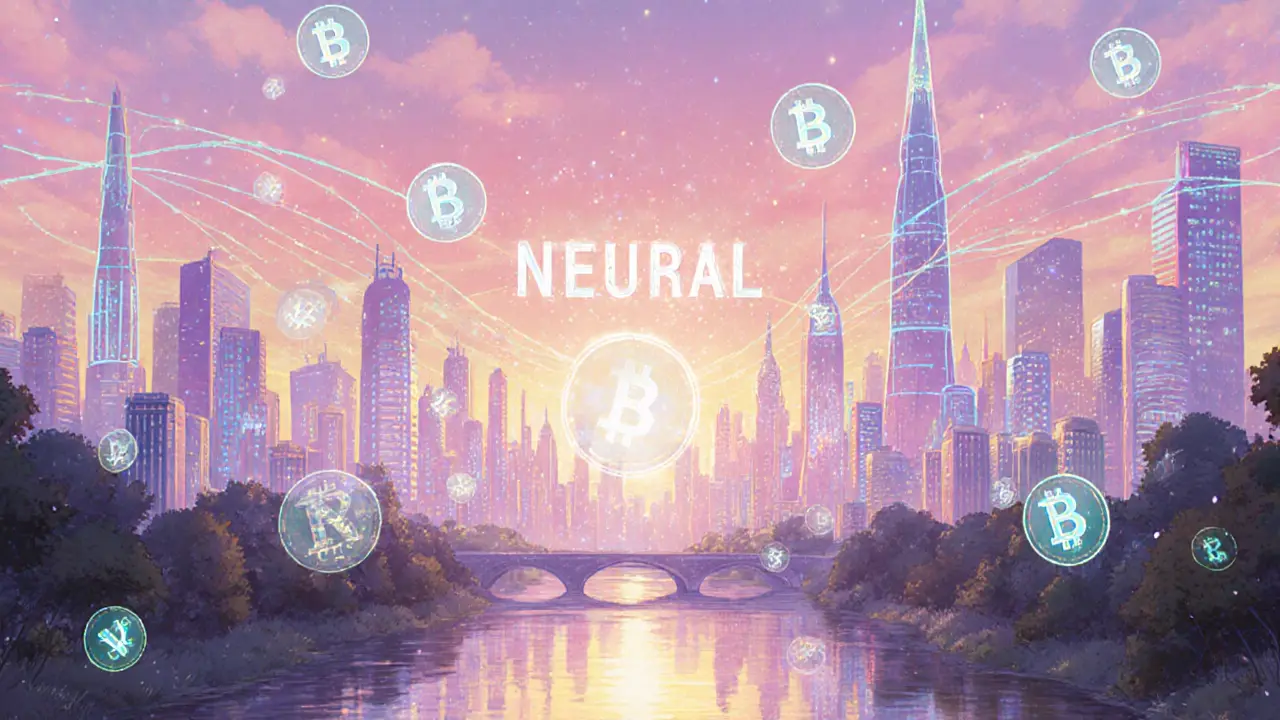
NeuralAI (NEURAL) Token Value Estimator
Current Market Data
Estimate Your Investment
Estimated Results
Tokenomics Overview
NEURAL has a fixed supply of 10 million tokens. It operates on both Ethereum and Solana blockchains, with trading pairs available on major decentralized exchanges.
The token is used for API access, governance voting, and royalty distribution within the NeuralAI ecosystem.
Quick Summary
- NeuralAI (NEURAL) powers a generative‑AI platform that turns text or images into ready‑to‑use 3D models in seconds.
- The token has a fixed 10million supply, trades around $2.20 and sits at a $21million market cap.
- It runs on both Ethereum and Solana, with liquid pairs on Uniswap, Ourbit and Raydium.
- Auto‑tokenization ties every AI‑generated world to $NEURAL, enabling royalty‑based ownership.
- Target users include indie game developers, AR/VR creators and anyone who needs quick 3D assets without learning complex software.
Imagine typing "futuristic cityscape at sunset" and receiving a fully textured 3D scene ready for Unity in under a minute. NeuralAI is a cryptocurrency‑backed platform that uses generative artificial intelligence to create 3D assets from simple prompts.
What is NeuralAI?
Launched in early 2024, NeuralAI positions itself at the crossroads of AI, gaming and blockchain. The company’s website, goneural.ai, markets the service as a "revolutionary solution for 3D content creation" that removes the steep learning curve of traditional tools like Blender or Maya. By bundling the creation engine with a native utility token (NEURAL), the project aims to incentivize both creators and developers.
How the NEURAL Token Works
At its core, NEURAL is a utility token with a total supply of 10million, all of which are currently circulating. With a price hovering between $2.15 and $2.24 as of October22025, the fully diluted market cap sits at roughly $21.45million, placing the coin around #883 on CoinMarketCap.
The token lives on two major blockchains: Ethereum (ERC‑20) and Solana (SPL). This multi‑chain approach broadens access and reduces transaction fees for users on either network. Trading pairs include NEURAL/WETH on Uniswap V2, NEURAL/USDT on Ourbit, and NEURAL/SOL on Raydium, delivering a combined 24‑hour volume of over $200k.
NEURAL isn’t just a speculative asset; it fuels the platform’s "auto‑tokenization" feature. Every AI‑generated world is automatically paired with a unique NEURAL token, granting the creator royalty rights and a clear ownership trail-similar to an NFT but purpose‑built for 3D assets.
Core Technology: Generative AI for 3D Assets
The engine behind NeuralAI is a proprietary generative AI model trained on massive libraries of 3D geometry, textures and lighting setups. When users submit a text prompt or reference image, the model predicts a mesh, applies realistic materials, and exports the result in formats compatible with Unity, Unreal, Blender and other major suites.
Generative AI refers to machine‑learning systems that create new content-images, text, or in this case, 3‑dimensional models-based on learned patterns. NeuralAI claims "creation in seconds," a dramatic speedup compared with the hours or days developers traditionally spend modeling.
The platform offers a free API with no setup fees, allowing developers to integrate 3D generation directly into pipelines. While exact throughput numbers aren’t public, early adopters report generating dozens of assets per minute during batch testing.
Use Cases: Who Benefits?
Gaming industry encompasses studios and indie developers creating interactive experiences for consoles, PC and mobile is the primary target. Small teams can quickly spin up environment assets, character prototypes, or weapon models without hiring a dedicated 3D artist.
- Indie developers: Reduce production budgets by up to 70% by replacing manual modeling with AI‑generated placeholders that can be refined later.
- AR/VR creators: Generate immersive objects on‑the‑fly for location‑based experiences.
- Marketing teams: Produce quick visualizations for pitch decks or product demos.
The token‑based royalty system also opens new monetization pathways. A creator can sell a NEURAL‑linked asset on a marketplace, collect royalties each time the asset is reused, and retain full provenance thanks to the blockchain record.

Tokenomics & Economic Incentives
Beyond the auto‑tokenization, the ecosystem uses NEURAL for three practical purposes:
- Pay‑for‑API usage: While the base API is free, advanced features-higher resolution meshes, batch processing, or priority queuing-are unlocked with NEURAL payments.
- Staking for governance: Token holders can vote on roadmap items, such as adding new export formats or expanding model libraries.
- Royalty distribution: Every time a tokenized world is resold, a preset percentage of the sale price automatically flows back to the original creator’s NEURAL wallet.
This structure encourages a virtuous cycle: more creators mint assets → higher demand for NEURAL to pay royalties → token value supports platform development.
Market Performance & Trading Landscape
The price action in the past week showed a steady climb of 3.5% on average, with daily volumes ranging between $104k and $171k. The holder base counts roughly 20330 distinct addresses, indicating a moderate but growing community.
Key exchange data (as of October22025):
| Exchange | Pair | 24‑Hour Volume (USD) |
|---|---|---|
| Uniswap V2 | NEURAL/WETH | $64,882 |
| Ourbit | NEURAL/USDT | $31,893 |
| Raydium (CLMM) | NEURAL/SOL | $8,282 |
Liquidity across both Ethereum and Solana networks keeps transaction costs reasonable, a critical factor for developers who may need to mint dozens of assets in a single session.
NeuralAI vs Traditional 3D Tools
While Blender, Maya or 3ds Max remain industry standards for high‑fidelity modeling, they require months of training and substantial hardware. NeuralAI offers a rapid‑prototyping alternative. Below is a side‑by‑side look at the most relevant criteria.
| Feature | NeuralAI (NEURAL) | Blender / Maya / 3ds Max |
|---|---|---|
| Learning Curve | Text prompt - minutes | Weeks‑to‑months of training |
| Creation Speed | Seconds per model | Hours‑days per complex asset |
| Cost | Free API + token fees | Free (open‑source) or expensive licenses |
| Blockchain Ownership | Built‑in tokenized royalties | External NFT workflows |
| Customization | Limited to AI model’s training data | Full manual control |
NeuralAI isn’t a replacement for high‑end pipelines, but it excels at rapid iteration, asset placeholders, and democratizing 3D creation for teams that lack dedicated artists.
Community, Adoption & Outlook
The project maintains an active presence on Twitter (@goneuralai) and Facebook, posting weekly demo videos and community challenges. With over 20k holders, the community is sizable for its market cap, though deeper engagement metrics (Discord activity, Reddit threads) are still thin.
Roadmap hints suggest continued expansion of format support (GLTF, FBX) and tighter integration with Unity’s Asset Store. The development team emphasizes a "developer‑first" approach, promising SDKs for C#, Python and JavaScript by Q12026.
Potential growth drivers include:
- Increased demand for rapid prototyping in the booming indie game sector.
- Adoption of AI‑generated assets in AR/VR marketing campaigns.
- Partnerships with game engine marketplaces that showcase tokenized assets.
However, challenges remain: the lack of publicly audited performance benchmarks, limited third‑party reviews, and the broader regulatory uncertainty around crypto‑linked NFTs.
Risks & Considerations
Before committing funds or integrating the API, keep these points in mind:
- Technical opacity: The core model’s training data and generation limits aren’t disclosed, making it hard to predict asset quality for niche styles.
- Market volatility: NEURAL’s price can swing with overall crypto sentiment, potentially affecting cost of advanced API features.
- Regulatory landscape: Tokenized assets that function like NFTs may face future compliance requirements in the EU or UK.
- Adoption uncertainty: Without large studio endorsements, the ecosystem could stay niche.
Balancing these risks against the speed and cost benefits will determine whether NeuralAI becomes a mainstream tool or remains a promising prototype.
Frequently Asked Questions
What does the NEURAL token actually do?
NEURAL powers the platform’s API fees, enables royalty payouts for tokenized 3D worlds, and serves as the governance token for roadmap voting.
Can I use NeuralAI without buying NEURAL?
The basic API is free, but advanced features (higher‑resolution meshes, batch jobs, priority processing) require NEURAL payments. You can also earn NEURAL by staking or by receiving royalties from tokenized assets you create.
Which blockchains does NEURAL run on?
NEURAL exists as an ERC‑20 token on Ethereum and as an SPL token on Solana, allowing users to pick the network with lower fees for their needs.
How does auto‑tokenization work?
When the AI creates a 3D world, the platform automatically mints a unique NEURAL token linked to that asset. The token records ownership, enforces royalty splits, and can be transferred or sold on compatible marketplaces.
Is NeuralAI suitable for high‑end production?
For polished, studio‑grade models, traditional tools still lead. NeuralAI shines for rapid prototyping, filler assets, and projects where speed outweighs absolute visual fidelity.
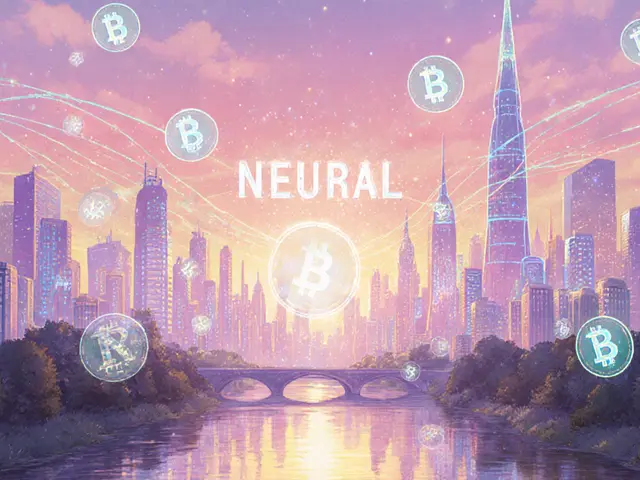


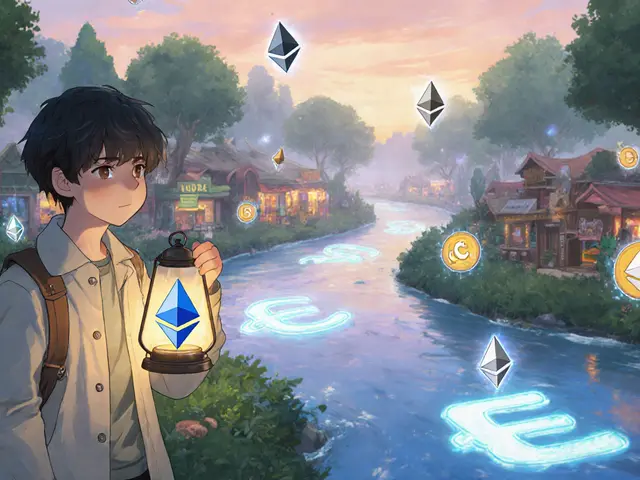
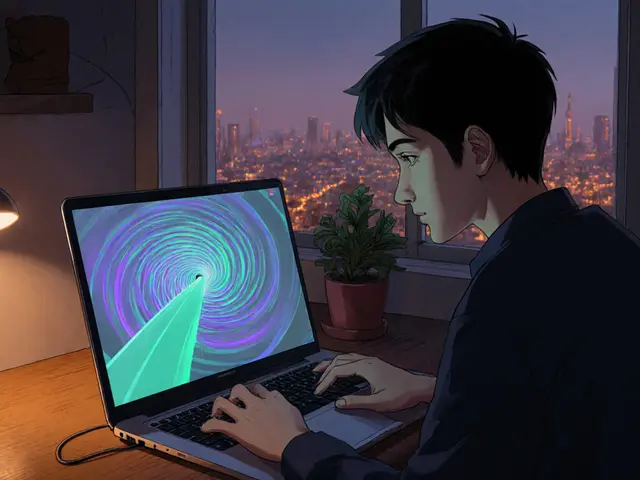
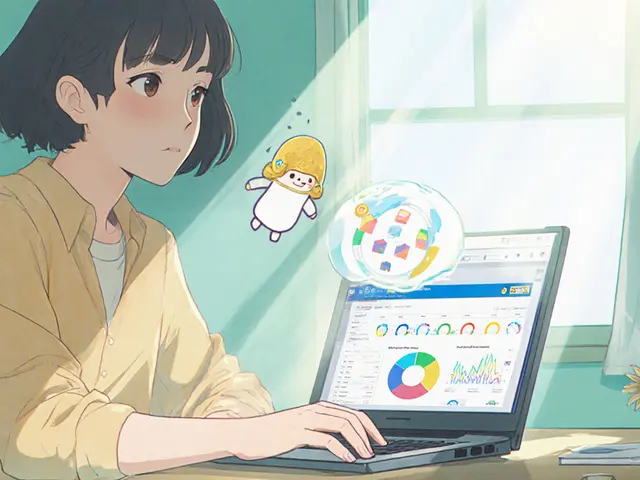
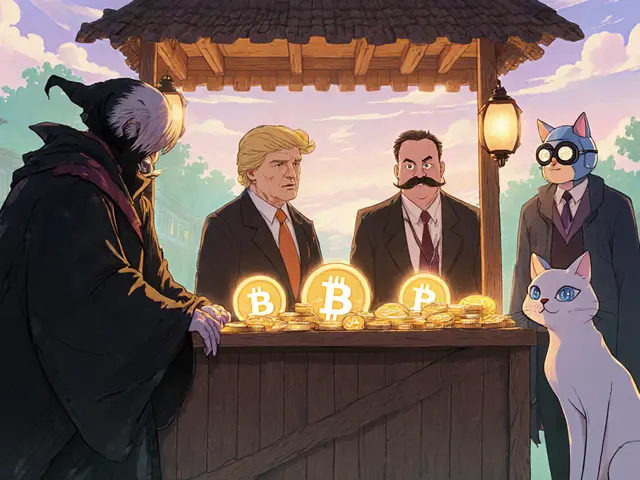
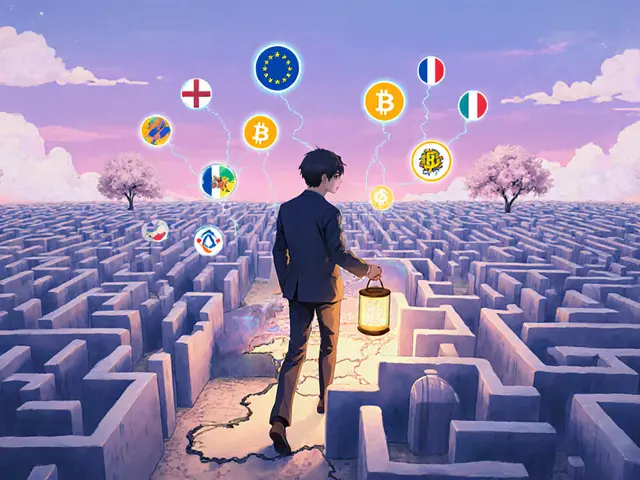
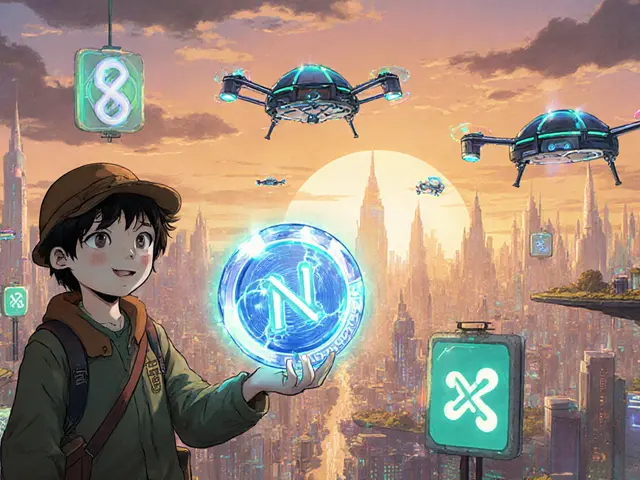
Courtney Winq-Microblading
December 2, 2024 AT 07:08Reading about NeuralAI feels like watching a sunrise over a digital canyon, where the colors of AI‑generated geometry blend with the crisp neon of blockchain. The idea of typing a prompt and getting a ready‑to‑use 3D asset in seconds sparks a quiet wonder about how creativity is evolving. I appreciate the token’s dual‑chain presence, which hints at a future where developers can hop between Ethereum and Solana without missing a beat. The royalty‑based ownership model reminds me of an artist finally getting paid for every resale of their work. All in all, it’s a calm yet exciting glimpse at a new frontier.
katie littlewood
December 2, 2024 AT 21:14NeuralAI’s tokenomics present a fascinating tapestry that weaves together utility, governance, and incentivization in a way that feels both ambitious and meticulously crafted. First, the fixed 10 million supply establishes scarcity, a classic hallmark of many successful crypto projects, yet the dual‑chain deployment on Ethereum and Solana broadens accessibility while offering users the flexibility to choose the network that best fits their cost and speed requirements. The auto‑tokenization of each AI‑generated world adds a layer of provenance that traditional 3D pipelines simply cannot match, effectively turning every asset into a tradable economic unit with built‑in royalty streams.
When it comes to the practical side of using the platform, the free tier API lowers the barrier to entry for hobbyists, while the tiered NEURAL‑paid features-higher‑resolution meshes, priority processing, and bulk batch jobs-provide a clear path for scaling up as projects grow. This tiered model not only monetizes advanced functionalities but also creates a feedback loop: as more creators mint assets, demand for NEURAL rises, potentially lifting token value and fueling further development.
The governance aspect, where token holders can vote on roadmap priorities, is another compelling feature. It encourages community participation and aligns the product’s evolution with the needs of its most invested users. However, the success of this governance will depend heavily on transparent voting mechanisms and active community engagement, areas where many projects stumble.
Liquidity appears healthy, with decent 24‑hour volumes across Uniswap, Ourbit, and Raydium, suggesting that there is sufficient market interest to support trading without excessive slippage. Yet, it’s worth noting that the overall market cap remains modest at roughly $21 million, meaning the token may be susceptible to volatility driven by broader crypto sentiment.
From a technical perspective, the proprietary generative AI model is a black box for now, and the lack of publicly audited performance benchmarks could be a red flag for risk‑averse developers. Transparency around model training data, generation limits, and quality assurance processes would go a long way toward building trust. Nonetheless, early adopters report impressive generation speeds-dozens of assets per minute-indicating that the underlying infrastructure can handle real‑world workloads.
In summary, NeuralAI offers a compelling blend of rapid 3D prototyping, blockchain‑enabled ownership, and a token‑driven economic engine. Its success will likely hinge on continued community growth, transparent technical disclosures, and strategic partnerships with game engine marketplaces. If those pieces fall into place, NEURAL could become a staple in the indie developer toolkit, democratizing 3D creation in a way that feels both inevitable and exhilarating.
Jenae Lawler
December 3, 2024 AT 11:20While the marketing gloss paints NeuralAI as a revolutionary force, the scarcity of audited performance data leaves a lingering doubt about its real-world applicability. Moreover, the token’s reliance on speculative demand may expose it to the typical volatility of the crypto sphere.
Chad Fraser
December 4, 2024 AT 01:26Wow, this platform could seriously level the playing field for indie devs – no more waiting weeks for assets!
Jayne McCann
December 4, 2024 AT 15:32Not convinced that AI‑generated models can replace a skilled artist’s touch.
Charles Banks Jr.
December 5, 2024 AT 05:38Sure, the idea sounds slick, but have you *actually* tried the API on a heavy‑load pipeline? I ran a test with a hundred prompts and the latency spiked dramatically, making the whole "seconds" claim feel more like a hopeful PR spin.
Ben Dwyer
December 5, 2024 AT 19:44The community‑first approach, especially staking for governance, could foster a more resilient ecosystem if executed with transparency.
Lindsay Miller
December 6, 2024 AT 09:50I like that the platform tries to bridge the gap between creators and developers, offering a simple way to monetize 3D assets through royalties.
Katrinka Scribner
December 6, 2024 AT 23:56Honestly, the concept is super cool 😍 but I’m a bit wary of the token’s price swings 🚀📉.
VICKIE MALBRUE
December 7, 2024 AT 14:02Sounds promising and fun.
Waynne Kilian
December 8, 2024 AT 04:08It’s refreshing to see a project that actually thinks about how creators get paid, not just how investors can profit.
Naomi Snelling
December 8, 2024 AT 18:14Everything looks good until the regulators decide AI‑generated NFTs are a form of unregistered securities-then we’re all in trouble.
Michael Wilkinson
December 9, 2024 AT 08:20Regulators will sort it out, but we should keep an eye on compliance.
Billy Krzemien
December 9, 2024 AT 22:26The dual‑chain architecture is a smart move, reducing transaction costs for users on Solana while retaining Ethereum’s broad ecosystem.
april harper
December 10, 2024 AT 12:32Another hype cycle?
Clint Barnett
December 11, 2024 AT 02:38NeuralAI’s vision of democratizing 3D creation could have a ripple effect across multiple creative industries, from game development to architectural visualization. By lowering the entry barrier, smaller studios and even solo creators gain the ability to iterate rapidly, which historically required a dedicated art department. The token’s governance mechanism, while still nascent, promises a community‑driven roadmap that can adapt to emerging user needs, such as new export formats or integration with popular engines like Unity and Unreal. Moreover, the royalty‑sharing model encoded in the blockchain offers a sustainable revenue stream for creators, shifting the economics away from one‑off sales toward ongoing participation. If the platform can maintain high‑quality output and transparent performance metrics, it could indeed become a cornerstone of the next generation of content pipelines.
Jacob Anderson
December 11, 2024 AT 16:44Sounds like another flashy token with lofty promises.
Kate Nicholls
December 12, 2024 AT 06:50The concept is solid, but execution will determine its fate.
Carl Robertson
December 12, 2024 AT 20:56While the idea may have merit, the market is already saturated with similar projects, making differentiation a hefty challenge.
Rajini N
December 13, 2024 AT 11:02From a developer’s standpoint, the API’s straightforward integration with C# and Python scripts is a real advantage, especially when building pipelines that need to generate assets on the fly.
Sidharth Praveen
December 14, 2024 AT 01:08Looking forward to seeing how the community shapes the roadmap.
Sophie Sturdevant
December 14, 2024 AT 15:14The tokenomics, while innovative, could benefit from clearer disclosure of how royalty percentages are calculated and distributed across multiple resale events.
Nathan Blades
December 15, 2024 AT 05:20NeuralAI’s approach to merging generative AI with blockchain ownership opens up a handful of intriguing possibilities for the future of digital creation. By allowing each 3D asset to be automatically tokenized, it eliminates the cumbersome manual process of minting NFTs for individual pieces, thereby streamlining the workflow for developers who need to produce large volumes of content quickly. The dual‑chain strategy-leveraging both Ethereum’s security and Solana’s speed-helps to keep transaction fees manageable, which is essential when dealing with batch operations that could involve dozens or hundreds of assets at a time.
From a practical perspective, the free tier API lowers the barrier for experimentation, encouraging hobbyists and small studios to test the platform without upfront costs. As teams grow and require higher resolution meshes or priority processing, the ability to pay with NEURAL tokens creates a self‑reinforcing economic loop: increased usage drives token demand, which in turn funds further development and potentially improves the service.
Moreover, the built‑in royalty distribution offers creators a recurring revenue stream, aligning incentives across the ecosystem. This could foster a vibrant marketplace where assets are not only sold once but continue to generate value each time they are reused in new projects. However, the success of this model hinges on transparency-users need clear insight into how royalties are calculated, the exact percentages taken, and the mechanisms for disbursement.
Technical transparency is also crucial. The lack of public benchmarks for the AI model’s output quality and generation speed leaves a gap that could be filled by third‑party audits or community‑driven testing. Providing detailed performance metrics would help potential adopters gauge whether the generated assets meet the fidelity standards required for high‑end production pipelines.
In the broader context, NeuralAI could act as a catalyst for a more decentralized creative economy, where artists retain ownership and earn ongoing compensation, while developers gain rapid access to diverse 3D assets without the overhead of traditional modeling. If the project navigates regulatory considerations and maintains robust community engagement, it has the potential to become a cornerstone technology for the next wave of immersive experiences.
Somesh Nikam
December 15, 2024 AT 19:26Excited to try it out! 🚀👍